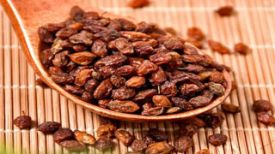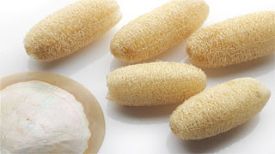Development history:
The Shennong Materia Medica Classic states: "Honeysuckle has a cold and sweet taste, and has the effects of clearing heat and detoxifying, cooling blood and removing stasis. It is mainly used to treat external wind and heat, the onset of plague, sores and boils, redness, swelling, heat and pain, and fecal abscess and blood.".
The Compendium of Materia Medica elaborates in detail that honeysuckle has the effect of "long-term consumption, lightness, and longevity". In the 1980s, the Ministry of Health of the People's Republic of China conducted chemical analysis on honeysuckle. The results showed that honeysuckle contains various essential trace elements and chemical components for the human body, as well as various active enzyme substances that are beneficial to the human body. It has good effects such as anti-aging, anti-cancer, and lightweight health.
Medicinal value:
Honeysuckle has been famous for its extensive medicinal value since ancient times. Its main efficacy is to clear heat and detoxify, mainly treating warm diseases such as fever, heat toxic dysentery, carbuncle and furuncle. Modern research has shown that honeysuckle contains pharmacological active ingredients such as chlorogenic acid and luteolin glycosides, which have strong inhibitory effects on various pathogenic bacteria such as hemolytic streptococcus and Staphylococcus aureus, as well as viruses causing upper respiratory tract infections. In addition, it can enhance immunity, resist early pregnancy, protect the liver, anti-tumor, anti-inflammatory, antipyretic, hemostatic (coagulation), inhibit intestinal absorption of cholesterol, and has a wide range of clinical applications. It can be used in combination with other drugs to treat more than 40 diseases such as respiratory infections, dysentery, acute urinary system infections, and hypertension.
Honeysuckle has a cold nature, a sweet taste, and enters the lungs, heart, and stomach meridians. It has the effects of clearing heat and detoxifying, anti-inflammatory, tonifying deficiency and treating wind. It is mainly used to treat bloating, fever, heat toxic carbuncle and tumor, and other diseases. It has certain therapeutic effects on symptoms such as dizziness, dry mouth and thirst, sweating and stuffiness, enteritis, dysentery, measles, pneumonia, Japanese encephalitis, meningitis, acute mastitis, sepsis, appendicitis, skin infections, carbuncle and furuncle, erysipelas, mumps, and purulent tonsillitis.
After boiling honeysuckle vine in water, it has a certain therapeutic effect on skin itching such as eczema in children, and has an inhibitory effect on various pathogenic bacteria and viruses in livestock and poultry. If a certain dose of honeysuckle vine leaves (Lonicera japonica) powder or boiling water can be added during animal breeding, it has a considerable effect on preventing and treating warm diseases, fever, wind heat colds, pharyngitis, pneumonia, dysentery, swelling ulcers, erysipelas, and cellulitis in animals. Using Forsythia suspensa and Banlangen decoction of Honeysuckle can treat mumps; Honeysuckle tea can dispel heat and brighten the eyes; Lianqiao Jinyinhua Liang Tang can treat external fever and cough. Boil honeysuckle, chrysanthemum, platycodon grandiflorus, and licorice in water for 10 minutes until cool. Drink as a beverage to treat pharyngitis and tonsillitis.
The produced honeysuckle preparations include "Yinqiao Jiedu Tablets", "Yinhuang Tablets", "Yinhuang Injection", etc. "Honeysuckle Dew" is an aromatic volatile oil and water-soluble extract extracted from honeysuckle by distillation. It is a good product for clearing fire and detoxifying, and can treat symptoms such as fetal toxicity, sores, fever, and thirst in children; Used as a substitute for tea during the summer season, it can treat warm heat, acne, and dysentery. The stem vine is called "Lonicera japonica vine" and is also used for medicinal purposes. The effective ingredients of honeysuckle are chlorogenic acid and isochlorogenic acid. This is a secondary biomass produced during plant metabolism, and its content not only depends on the type of plant, but may also be greatly influenced by ecological and geographical conditions such as climate, soil, and phenology.
Honeysuckle tea has a unique weight loss function and can also inhibit and kill pathogenic bacteria in the throat. It has anti infection effects on the elderly and children. Frequent use of honeysuckle soaking or decoction is beneficial for the treatment and rehabilitation of wind fire eye redness, sore throat, obesity, liver heat syndrome, and liver heat type hypertension.
Prescription selection:
① Prevention of Japanese encephalitis and meningitis: Honeysuckle, Forsythia suspensa. 15g each of Daqinggen, Lugen, and Licorice. Boiled in water instead of tea, take one dose daily for three to five consecutive days. (Jiangxi Herbal Medicine)
② For those who are too yin and have a warm wind, warm heat, and early winter temperatures, but do not feel cold and thirsty due to heat: 50g of Forsythia suspensa, 50g of honeysuckle, 30g of bitter platycodon grandiflorus, 30g of mint, 20g of bamboo leaves, 25g of raw licorice, 20g of Schizonepeta japonica, 25g of light fermented soybean, and 30g of burdock. Take 30g of fresh reed root soup and stir fry. (Yin Qiao San in "Wen Bing Tiao Bian")
③ Treatment for dysentery: 25g of honeysuckle (roasted and stored in a copper pot). Red dysentery is treated with white honey water, while white dysentery is treated with sugar water. (Huizhitang Experience Formula)
④ Heat drenching: 50g each of honeysuckle, sea goldenrod vine, coriander, cherry blossom root, and white thatch root. Boiled in water, one dose per day, for a course of treatment lasting five to seven days. (Jiangxi Herbal Medicine)
⑤ Treatment for biliary tract infections and wound infections: 50g of honeysuckle, 25g of Forsythia suspensa, Daqinggen, Scutellaria baicalensis, and wild chrysanthemum each. Boiled in water, take one dose daily. (Jiangxi Herbal Medicine)
⑥ For those who suffer from severe pain and discoloration due to sores and ulcers: 100g of honeysuckle with branches and leaves (file), 200g of astragalus, and 50g of licorice. Cut it finely, add one liter of wine to the pot and bottle, close the mouth, and simmer the soup for three to two hours. Take it out, remove the dross, and take it orally. (Huichuang Jinyinhua San from "Huofa Jiyao")
⑦ To treat all kinds of swelling and poisoning, regardless of whether it has already collapsed or not, or if it has just started to fever, and has boils and constipation, throat obstruction, breast moths: Honeysuckle (with stems and leaves) is naturally juiced in half a bowl, boiled in half, and applied with dregs to disinfect the inside, disperse qi and blood, its efficacy is unparalleled. (The Experience Formula of Jishan Hall)
⑧ At the beginning of treating carbuncle and gangrene: 250g of honeysuckle, fry in ten bowls of water until two bowls, add 100g of Angelica sinensis, fry together until one bowl, and take it in one breath. (Guihua Tang from "Dongtian Aozhi")
⑨ Treat all internal and external abscesses: 200g of honeysuckle and 150g of licorice. Boil it in water for a meal, and if you can drink it, fry it in wine. (Lonicera japonica soup in "Medical Insight")
⑩ To treat large intestine carbuncle, hands should not be pressed, and the right foot should be bent but not extended: 150g of honeysuckle, 100g of Angelica sinensis, 50g of Sanguisorba officinalis, 50g of Ophiopogon japonicus, 50g of black ginseng, 15g of raw licorice, 25g of Job's tears, and 10g of Scutellaria baicalensis. Boiled in water. ("Dongtian Aozhi" Qingchang Drink)
honeysuckle
Release time:2024-05-28 12:06:14
Reading:212
Word Count:7685
Subscribe to email
▣ Recommendation


